Waveform
| Frequency Generation |
Waveform
Waveform
Although most fellow “Rifers” well realize that we work primarily with square wave signals, most non-technical persons we have found, do not understand why a square wave is used, what it looks like, or the importance of the characteristics of the waveform itself. A pictorial comparison with other waveform's and characteristics may assist the novice better understand the relationships and attributes of our selection.
A waveform is simply a graphical plot of amplitude or relative amount of energy, (voltage in this case), over time. The amplitude typically being displayed on the vertical scale, time being displayed on the horizontal scale. The number of times this pattern repeats per sec corresponds to our “frequencies”
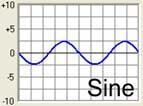
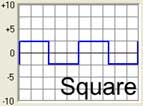
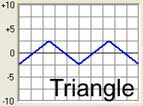
Most quality test/laboratory grade function generators are capable of generating all of the basic waveforms to frequencies far in excess of what is needed by the typical Rife experimenter. High-end laboratory grade function generators are also capable of programmability and even arbitrary waveform generation. The versatility and extent of this programmability can be very helpful in actual and practical Rife operations. It is not specifically important to the user's better understanding of the basics. In other words, it is a desired feature but not necessarily a requirement.
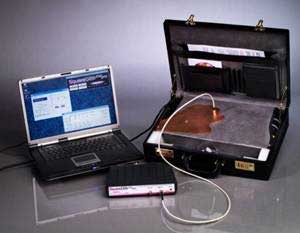 Note: The RIFEforLIFE SquareGEN pro provides all of the above mentioned features including the ability to display and capture content. Most of the pictures and captured illustrations in this document have been created from the SquareGEN pro hardware and software using real data captured during actual operations. Admittedly, many of these advanced optional features are not typically needed by most practical-level users, but provide invaluable resources to the serious researcher and experimenter. A well designed and full-featured unit will provide the user a well thought out and appropriate component for entry-level through advanced work. For this reason, and because of its built in recording and illustrating capabilities, most of this documentation will be utilizing and referring to RIFEforLIFE's SquareGENpro+ for these examples. Note: The RIFEforLIFE SquareGEN pro provides all of the above mentioned features including the ability to display and capture content. Most of the pictures and captured illustrations in this document have been created from the SquareGEN pro hardware and software using real data captured during actual operations. Admittedly, many of these advanced optional features are not typically needed by most practical-level users, but provide invaluable resources to the serious researcher and experimenter. A well designed and full-featured unit will provide the user a well thought out and appropriate component for entry-level through advanced work. For this reason, and because of its built in recording and illustrating capabilities, most of this documentation will be utilizing and referring to RIFEforLIFE's SquareGENpro+ for these examples. |
SquareGEN pro Frequency Generation
|
Oscilloscope & Function Generator
|
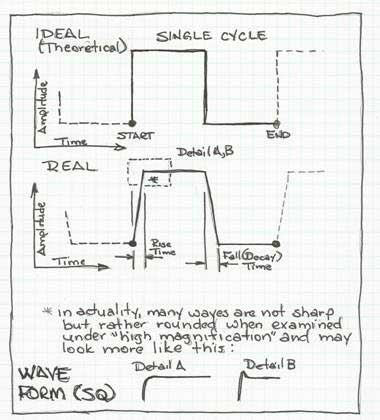
The first part of this illustration indicates an ideal or theoretical square wave form …which is basically an on an “on and off” signal. When switched on and off, the transition to the next state is theoretically immediate.
The second segment of this illustration shows in an exaggerated example, but realistic and necessary to understand component of the wave form itself. That is, the transition from one state to the other, (off to on or on to off), does not happen instantaneously. The amount of time this transition takes place is affected by many factors, but is often a good measure of whether a signal generator is appropriate for a particular environment.
Other deficiencies which also typically occur are at the transition points as shown in both details in the third segment of this illustration. The poor waveform shape, is often the result of overloading, poor improper or non-existent impedance considerations, or simply using a device in a manner or with equipment it was never intended or designed to integrate. Unfortunately, many devices being sold as Rife components are being utilized in environments for which they were not designed and the unfortunate degradation of waveform accuracy is unnoticed by the user.
Important Note: Depending on the type of equipment being utilized, other waveforms may be more appropriate or very advantageous for efficient use of some new equipment designs.
TO BE ADDED [why leading edge is important – relate to referenced technical papers]
Most researchers, (I've discussed these issues with), agree the specific waveform characteristics, attributes, and components are apparently very related to the physics by which all this seems to work or affect physiology at the molecular and cellular level. Much "formal" study has ALREADY been done in this and as we learn and experience more, we can better correlate the existing science to what is applicable for our use.
WAVEFORM ACCURACY
This is without a doubt, in my opinion, one of the weakest points of BOTH "sound card" output as well as “PC speaker” output is their inability to produce decent waveform. This can vary greatly from PC to PC depending on design. I HAVE seen decent waveforms at certain frequencies with both types of platforms, but this can and almost always does, vary a LOT across the usable frequency spectrum for which it was designed.... from good to TERRIBLE!
Better Waveform = Better Results ??? It is thought by most researcher that "better waveform" and waver "shape" typically equates to "better results and responses" As a general rule I agree completely. ... however I would NOT even begin to dictate what another persons criteria or expectations might be nor would it be appropriate to assume their environment or needs.
Different types of use may require different degrees of accuracy. For example, I personally, as the result of 2 serious car wrecks, utilize the most simplest of contact applications ON MYSELF. This was after months of almost DAILY "conventional” medical and chiropractic treatment.
|
The primary difference between the conventional treatments I was receiving and that which I was able to do myself was that the computer was selecting specific pain related frequencies to target. Although I was using the simplest of devices, with little consideration to waveform, I still received what was comparatively FAR MORE effective use of my time and energies …. It was simply a matter of frequency!!!
This was undoubtedly this revelation where I personally grew in my "Rife education and development. I STILL use basically that same contact-type setup for that type of application .... even preferred over the Bare-Rife setups I have on hand. Self-education is often the very best path to "enlightenment" or "epiphany".


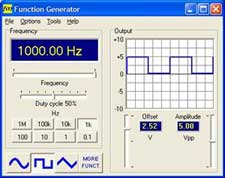 Most function generators have, at the very least, some form of frequency selection, and waveform selection. Either can be done in any number of ways. As you can see in the Function Generator frame, bottom left area of the, you have multiple waveform types to select from the “pushbutton menu”, specifically SIGN, SQUARE, TRIANGLE (also known with variations as “sawtooth”). The graphic representations shown in the previous illustrations, accurately depict their respective waveforms for obvious reasons. There are also often on better quality units other variations of these basic 3 included as well. Although not important at this point in our discussion, this particular unit also includes the ability for arbitrary, user created, unlimited library of waveforms to be implemented. An important side note however, the ability to construct and use specialized waveforms may be very advantageous to the serious Rife user to best utilize certain aspects and component designs. Although outside the scope of this primer, at a future date we hope to have extensive technical information, samples, and illustrated examples available.
Most function generators have, at the very least, some form of frequency selection, and waveform selection. Either can be done in any number of ways. As you can see in the Function Generator frame, bottom left area of the, you have multiple waveform types to select from the “pushbutton menu”, specifically SIGN, SQUARE, TRIANGLE (also known with variations as “sawtooth”). The graphic representations shown in the previous illustrations, accurately depict their respective waveforms for obvious reasons. There are also often on better quality units other variations of these basic 3 included as well. Although not important at this point in our discussion, this particular unit also includes the ability for arbitrary, user created, unlimited library of waveforms to be implemented. An important side note however, the ability to construct and use specialized waveforms may be very advantageous to the serious Rife user to best utilize certain aspects and component designs. Although outside the scope of this primer, at a future date we hope to have extensive technical information, samples, and illustrated examples available.  Show here is a typical screen generating a 2128 Hz square wave signal. The graphic representations on the function generator segment of this pictorial, (lower right), is an ideal representation of what the function generator he is trying to do. The SquareGEN pro oscilloscope representation is a precise and accurate depiction of what is being measured and monitored under actual load conditions. The oscilloscope controls allow the user to view the data from a variety of perspectives based on user selectable scales of time and amplitude. An analogy to a microscope would to be to allow the viewer to zoom in or out on an object with very precise control. What should be noted here for later use is the exceptionally fast “rise time” and “fall time”, (also known as “decay”). Rise time is the front edge for the square wave. The fall time is the trailing edge of the waveform. In a theoretical world, the rise time would be 0, in other words, instantaneous. Likewise, for the fall time. In practical terms however, we do not live in the theoretical world and each rise times and fall times can be measured and even displayed. The measured accuracy of the waveform, is one of the best indicators of the quality of the equipment. Proper matching of device is still another important consideration with other components is necessary to insure best performance.
Show here is a typical screen generating a 2128 Hz square wave signal. The graphic representations on the function generator segment of this pictorial, (lower right), is an ideal representation of what the function generator he is trying to do. The SquareGEN pro oscilloscope representation is a precise and accurate depiction of what is being measured and monitored under actual load conditions. The oscilloscope controls allow the user to view the data from a variety of perspectives based on user selectable scales of time and amplitude. An analogy to a microscope would to be to allow the viewer to zoom in or out on an object with very precise control. What should be noted here for later use is the exceptionally fast “rise time” and “fall time”, (also known as “decay”). Rise time is the front edge for the square wave. The fall time is the trailing edge of the waveform. In a theoretical world, the rise time would be 0, in other words, instantaneous. Likewise, for the fall time. In practical terms however, we do not live in the theoretical world and each rise times and fall times can be measured and even displayed. The measured accuracy of the waveform, is one of the best indicators of the quality of the equipment. Proper matching of device is still another important consideration with other components is necessary to insure best performance. 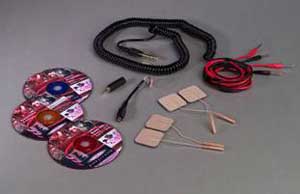 Actually the only real relief I was receiving or noticing was the conventional TENS treatments at the respective offices of BOTH the doctor and the chiropractor .... both providing different explanations as to how it was working and the reasons for its use. Having a technical background I had absolutely NO PROBLEM constructing something simple to test the Rife “theories” which quite frankly, at the time, I considered was simply the "quack medicine" it was universally labeled (in my technical world). As skeptical as I was, I was pleasantly surprised to see how wrong I was in my UNEDUCATED assumption. This worked for me, FAR better than ANYTHING the doctors had applied using VERY EXPENSIVE "approved" equipment. The treatment, therapy, drugs, TENS, etc had failed to seriously correct and alleviate the associated pain. It was ONLY through the (off the record) suggestions, guidance, and explanations of a dedicated chiropractor that I realized there might be a possible alternative solution.
Actually the only real relief I was receiving or noticing was the conventional TENS treatments at the respective offices of BOTH the doctor and the chiropractor .... both providing different explanations as to how it was working and the reasons for its use. Having a technical background I had absolutely NO PROBLEM constructing something simple to test the Rife “theories” which quite frankly, at the time, I considered was simply the "quack medicine" it was universally labeled (in my technical world). As skeptical as I was, I was pleasantly surprised to see how wrong I was in my UNEDUCATED assumption. This worked for me, FAR better than ANYTHING the doctors had applied using VERY EXPENSIVE "approved" equipment. The treatment, therapy, drugs, TENS, etc had failed to seriously correct and alleviate the associated pain. It was ONLY through the (off the record) suggestions, guidance, and explanations of a dedicated chiropractor that I realized there might be a possible alternative solution.